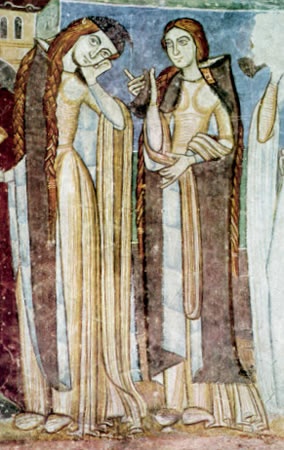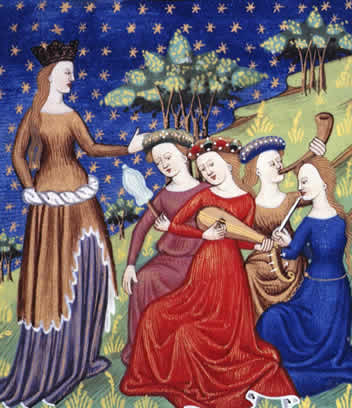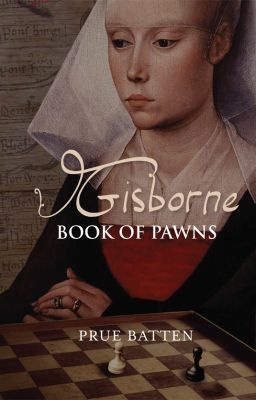Spinning facts to make fiction…
The unearthing of Richard III’s remains has redefined how we all view history. To think that the body, hastily thrown in a grave 600 years ago, was unearthed at a time when forensic study can offer so much detail reminds me of the phrase ‘let there be light!’.
It also raises the question – how much history will be changed by such examination?
Every researcher, every academic, every archaeologist in a chosen field is finding detail that can explode facts from the past, turning them into myth, turning them into fictitious detail.
Highly successful historical fiction author, Colin Falconer recently said ‘…those who argue for historical accuracy lose their ground … because it is impossible to know exactly what happened…’ and whilst I may have taken his comment out of context (he was in fact commenting on the background to the harem, and the relationship between Suleiman and his great love, Hurrem), I think he makes an extremely valid point.
None of us were there.
We can appreciate and study artifacts, buildings, art and writing of the times, but we are surely none of us so naïve as to assume that spin-doctoring is only a twenty-first century phenomenon. Take the case of Richard III. Presented after his death as something partway between the Devil and a monster, academics are now beginning to explode the myth.
I am confident this would have happened consistently right through history, depending on what legacy those in power wished to pass down through the ages. In addition there are also lesser known facts that can be dissolved before our eyes…
For example: in reading http://www.sharonkaypenman.com/medievalmishaps.htm I discovered this: “Sometimes apparent inconsistencies in my books are not errors, merely reflect information newly discovered. Sharp-eyed readers may have noticed that Eleanor has shed two years since Here Be Dragons and my first mysteries. It was always assumed that she’d been born in 1122, but Andrew W. Lewis in “The Birth and Childhood of King John: Some Revisions,” published in Eleanor of Aquitaine; Lord and Lady, very convincingly demonstrated that she was actually born in 1124.”
Which brings me to my own thoughts as I research and write the story of Guy of Gisborne and Ysabel of Moncrieff in the twelfth century. How can we be so pedantic as to assume that the fact we are reading in a fiction is right or wrong? There may be interpretations, spin-doctoring or a plethora of information that may not even have been sourced yet.
Take the case of velvet. I wanted my own characters to dress in velvet. Penman is quite adamant about this: “In Here Be Dragons, I draped Joanna and other female characters in rich velvet gowns. I later found out that velvet was not known in the 12th century.”
So I did my own research and found this:
‘Velvet production became firmly established as an industry in the Middle East and eastern Europe by about the tenth century. The most skilled weavers came from Turkey, Greece, and Cyprus; when the latter was conquered by France in 1266, many artisans were forced to flee to continental Europe. Most settled in Lucca, Italy, already a major centre for the production of fine woollen textiles, thus allowing for the spread of velvet-weaving techniques further north into much of western Europe.
Moorish Spain was a second major centre of velvet production; it had been manufactured there since 948 AD, and various velvet-weavers’ guilds and organisations served to ensure the industry’s prosperity.
The first reference to velvet in England came in 1278…’
So perhaps in the context of England, Penman is right, but as far as my characters go, they have hovered in Aquitaine, have seen Saracen traders come and go, and more lately they have passed along the southern seaboard of Europe in the Middle Sea and are currently in Cyprus. Would it not be likely that traders right along the seaboard would have traded such fabrics to the noble and wealthy? Especially as Moorish Spain produced velvet from as early as 948AD? I prefer to believe they would. Can I substantiate that claim? No. There are no extant invoices from twelfth century merchants stating they sold so many ells of velvet to this or that noblewoman.
This is where fiction can take a basic fact and stretch it smoothly to fit a storyline, so that the folds drape seamlessly and light wafts and weaves through the dense nap. There will be some readers who say: ‘How dare you? You cannot play with facts like that!’
And I say, history is becoming malleable, the more that research is carried out. Should we as readers and writers not bend a little too?






Good points, Prue, and thanks for the heads up on Eleanor of Aquitaine. Clearly I need to update my research on King John.
Pedants who want to fault a writer for some insignificant factual misdemeanour would do well to ponder Shakespeare, whose historical plays often paid scant regard to such trifles as facts. Bill Bryson, in his text on Shakespeare, points out the bard had ancient Egyptians playing billiards, Julius Caesar with a clock, and men setting sail from landlocked Italian cities.
I suspect he might have picked up a few one-star negatives on Amazon for those.
You are so right, Mark. Also, Shakespeare used stories from other writers very frequently – but gave them his own depth and twist!
Hallo, Mark. You’re welcome. But then that is just one academic view. There may be ten who say rubbish. Shakespeare is forgiven for every little thing. He has educated and entertained the world for so long what do a few anachronisms matter?
Of course he’d have a plethora of one stars. There are some nasty pens out there!
Interesting blog, Prue. Have you read Josephine Tey’s book about Richard 111, The Daughter of Time? Presented as a detective story, it explores the truth about Richard and shows he wasn’t a monster. Well worth reading, if you’re interested in him.
Hi there, Gerry. Not yet but it’s on my ever-increasing TBR. Tey will probably move up the best seller list after this momentous discovery. Good to have you here again!
‘The Daughter of Time’ is a perfect mystery novel. It reminds you of how satisfying it feels to do really good research
Emma of Normandy was spinning facts in 1042 when she commissioned the book now known as Encomium Emmae Reginae. She left out the minor detail of a 15 year first marriage, partly because of the audience her book was written for at the time that it appeared. I’ve run into instances similar to your velvet story too, Pru. (And btw, just because no one WROTE ABOUT velvet in England until 1278 does not mean that it did not exist in England before that!) Wonderful essay!
Hi Pat, that is my point exactly. And thanks so much for the compliment. Did Emma of Normandy leave out mention of a 15 year marriage because of potential disfavour from the Church and thus the rest of the population? Did no one write about velvet because of Sumptuary Law?
I would never judge an author if the storyline enthralled me. That said, of course there are basic facts within a timeframe that must be respected. But I do think we all have to remember that history is indeed a fluid thing and becoming more fluid by the day. I dare say Mein Kampf was written with an exceptional spin … will hist.fict writers in another 300 years exclaim that it is the definitive text of the times? Lord, one hopes not. Awful example to use, I know, but you see where I’m coming from.
Good points here. I write historical romance and sometimes I just can’t find the info I need. Once looked for, literally, years for something. Finally just had to make something up based on what usually happened in cases like the one I was writing about.
Thanks so much, Michele. I find researching the twelfth century an absolutely classic example of changes in thought and research. Take bathing for instance. So many earlier academics would have us believe the Middle Ages were a filthy time. But more lately, no – bathing and cleanliness were de-rigeur. A simplistic explanation to illustrate my point, I know, but it might illustrate how history is quite a fluid thing, changing as more and more information and interpretation is elucidated.
And by the way, if an author has built a satisfactory timeframe with respect for the salient points, as a reader I’m not going to examine the novel under a microscope. I read for enjoyment, to form emotions about the characters, to be swept along in a swift plot that advances those characters and their relationships and endeavours. I certainly wouldn’t comdemn you for ‘making it up’ if you couldn’t get the answer elsewhere. Cheers!
As for Shakespeare, he wrote plays not history..but I do agree with you, we really don’t know the full truth about the past as we were not around at the time. This is one of the reason’s I love Connie Willis books about future Historian’s who are able to travel back into the past, so they can ensure that their Historical records are accurate. If you have never read, Doomsday Book, To say Nothing of the Dog, Firewatch, Blackout and All Clear, you should given them a try. I have heard other readers criticize Connie Willis for a lack of imagination for her descriptions of the future (such a small part of the books), but again how do we know what will happen in the future. Her historical research I think is well done and quite believable, but as you said who really knows…..I would love to be a Historian from Connie Willis Future, with the ability to go back in the past to research the accuracy of their History. Wouldn’t you?
Hallo Carole. I do recall reading somewhere that Shakespeare had a certain amount of pressure put on him to write a spin on the times. how do they know? Did he leave a mini-memoir somewhere saying Elizabeth’s ministers required it? Where on earth I read that, I have no idea – one of those little snippets that lodges in one’s brain in place of the important things!
I shall certainly seek out Connie Wills, her work sounds interesting. I believe as a reader that the test of a good author is not how overloaded with fact a novel might be, but how subtly the fact can be woven to convey a damned good story!
I think what I would like is to go back and test the ‘accuracy’ of all the claims from academics and many others. I think in the case of my own chosen timeframe, there would be some very bright ‘lightbulb’ moments.
Try reading Doomsday book by Connie Willis as this is the first of the time travelling Historians. The protagonist Kivrin, goes back to 14th Century at the time of the Plague. Due to effects of the virus on the transporter, the historian is accidently, transported to 14th Century England during the Black Plague. Not only is there a struggle to get the historian returned to 2048 but she must struggle to stay alive in a villiage that is ranpant with the horrors of the plague. Death and suffering is all around her. This is a very gripping, horrific and emotional story with some of the most memorable characters. I had the feeling I was living through the black death too, it felt that real!
Will do, Carole. I absolutely love finding out about all these ‘niche’ books. Thanks so much for letting me know about it.
Absolutely true Prue. I think the more one reads and researches though across all disciplines and in depth, the more one is able to have an informed opinion about the goings on in one’s particular period and the more the characters will be people of their time. Primary sources are frequently biased and secondary sources ditto, especially when it comes to making assumptions about characters. The Eleanor of Aquitaine birth date is interesting for a novelist. Marriage at 13 is a different prospect with reference to power and relationship dynamics to marriage at 15. Those 2 years can make all the difference to how a writer portrays the characters. More in depth research through the pipe rolls goes on to show that the half brother Joscelin, ascribed to Eleanor by historian Alison Weir isn’t her half-brother at all, but belonged to Adeliza of Louvain. So it’s buyer beware all the way down the line!
I think that’s my point exactly, Elizabeth, and thanks so much for commenting. Because this malleability is now a phenomenon, I think both the reader and the writer have to beware of the facts as they stand, as they may indeed change in the blink of an eye. That said, if the plot and characters are good enough, such changes shouldn’t upset a reader too unduly, surely. As a reader it wouldn’t upset me at all if I loved the story enough.